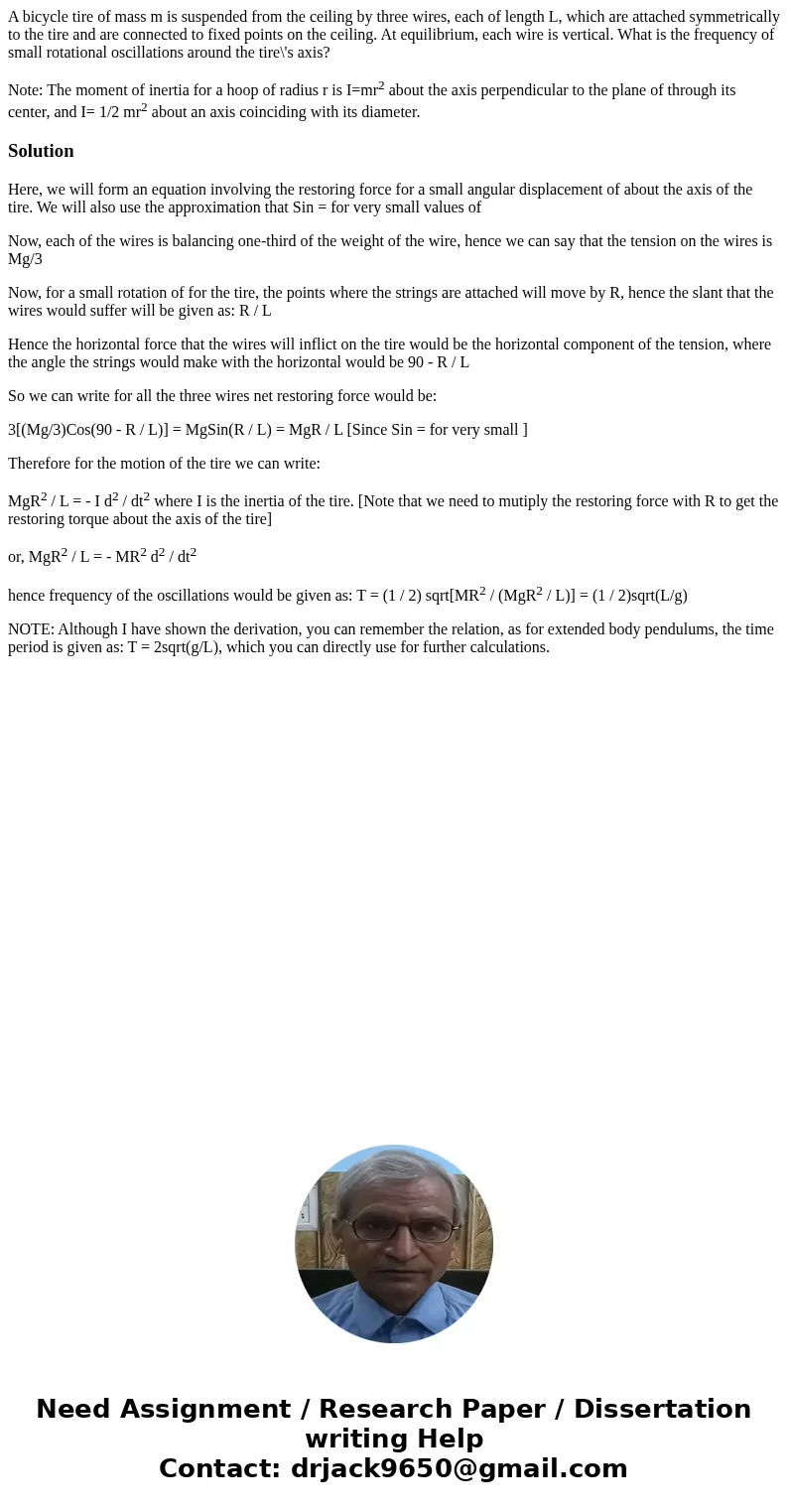A bicycle tire of mass m is suspended from the ceiling by th
A bicycle tire of mass m is suspended from the ceiling by three wires, each of length L, which are attached symmetrically to the tire and are connected to fixed points on the ceiling. At equilibrium, each wire is vertical. What is the frequency of small rotational oscillations around the tire\'s axis?
Note: The moment of inertia for a hoop of radius r is I=mr2 about the axis perpendicular to the plane of through its center, and I= 1/2 mr2 about an axis coinciding with its diameter.
Solution
Here, we will form an equation involving the restoring force for a small angular displacement of about the axis of the tire. We will also use the approximation that Sin = for very small values of
Now, each of the wires is balancing one-third of the weight of the wire, hence we can say that the tension on the wires is Mg/3
Now, for a small rotation of for the tire, the points where the strings are attached will move by R, hence the slant that the wires would suffer will be given as: R / L
Hence the horizontal force that the wires will inflict on the tire would be the horizontal component of the tension, where the angle the strings would make with the horizontal would be 90 - R / L
So we can write for all the three wires net restoring force would be:
3[(Mg/3)Cos(90 - R / L)] = MgSin(R / L) = MgR / L [Since Sin = for very small ]
Therefore for the motion of the tire we can write:
MgR2 / L = - I d2 / dt2 where I is the inertia of the tire. [Note that we need to mutiply the restoring force with R to get the restoring torque about the axis of the tire]
or, MgR2 / L = - MR2 d2 / dt2
hence frequency of the oscillations would be given as: T = (1 / 2) sqrt[MR2 / (MgR2 / L)] = (1 / 2)sqrt(L/g)
NOTE: Although I have shown the derivation, you can remember the relation, as for extended body pendulums, the time period is given as: T = 2sqrt(g/L), which you can directly use for further calculations.

 Homework Sourse
Homework Sourse